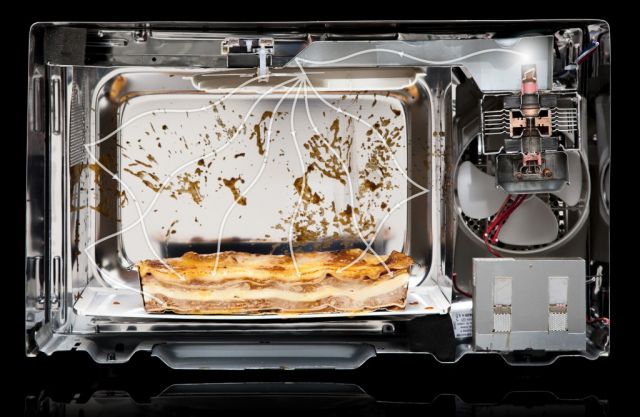

| Online: | |
| Visits: | |
| Stories: |

| Story Views | |
| Now: | |
| Last Hour: | |
| Last 24 Hours: | |
| Total: | |
Top 10 Marvellous Inventions Caused by Accident
When thinking of people who invented useful things in our life, we immediately think of some clever scientists who spent years of patience, skill and research. But not all of them like that. Actually, there are many inventions caused by accident. Are you ready to check out what they are?

Watch full video:
1. Play-Doh
Although some might choose to disagree, but “Play-Doh”, the clay-like substance designed for craft modelling was initially invented to be a cleansing agent for unclean wallpaper. The soft-doughy material wasn’t selling as intended and its manufacturing company Kutol discovered that children used the substance as a clay-modelling toy to create artful figures. Certain additives and colors were added and the product was rebranded as “Play-Doh”. The Toy-modelling product was immensely popular with kids.
2. Velcro
On a hunting expedition with his dogs, George De Mestral, a swiss engineer noticed tiny burrs on his socks and on his dog’s fur. Curiosity got the best of him, when he chose to further examine the particles and discovered that they had tiny hooklets that would attach themselves to soft surfaces. After an extended period of experimentation, Mestral chose to use nylon to imitate the burr effect and the result was named, “Velcro”.
3. X-Rays
The X-ray phenomena has found a wide range of applications for the purposes of medical diagnosis and its existence was detected accidentally. Wilhelm Conrad Roentgen, a German Physicist, in his experiments with Cathode Rays noticed a black carton which contained a discarded discharge tube which was glowing from across the room. He realized that when a thick screen was positioned between the fluorescent cardboard and the cathode ray emitter, light particles could pass through solid objects.
With this newly discovered radiation, Roentgen saw that images could be formed of internal structures of the human body.
4. Scotchguard
Working to invent a rubber material resistant to jet-fuel heat, Patsy O’Connell Sherman and Samuel Smith noticed that the substance when applied on a surface would not tarnish. In their case, it was the spot on Sherman’s shoes on which the substance fell that would remain clean. She backtracked her footsteps and discovered a powerful stain-resistant compound that would be widely used as a cleaning agent since 1952.
5. Plastic
In 1907, New York City, Belgian Chemist Leo Baekeland was attempting to create a synthetic resin that would enhance wood strength. He was trying to find a replacement for shellac, a resin obtained from the secretions of the female lac bug. Baekeland found a strong, moldable material which he named, “Bakelite”, which became the first ever thermosetting plastic and was the basis for the plastics known today.
6. Artificial Sweetener
Ira Remsen and Constantin Fahlberg, while working at Johns Hopkins University in 1879, were assigned to a lab handling coal tar. Fahlberg made a serious mistake as a chemist of having a meal with unwashed hands. From which he felt a sweet aftertaste, and it was caused from handling of the coal tar. The two chemists were quick to publish their discovery with only Fahlberg being the one who patented it. This created a minor tension between the colleagues.
7. Penicillin
In 1928, Sir Alexander Fleming in his unsuccessful quest to find a “wonder drug” that would remedy all disease and illnesses, discovered an antidote from his previous experiments. He observed that in one of his petri-dishes, the mold inside would dissolve bacteria. After studying it for a while, he managed to grow the mold himself and discovered penicillin, one of the most powerful known antibiotics.
8. Ink-Jet Printer
Ichiro Endo, a Canon engineer, was working on figuring a way to extract ink from a nozzle by means of electricity. On noticing the ink spurting out of the nozzle like a syringe, after leaving a hot iron on the nozzle, Endo realized that this could be the possible solution he was looking for. He collaborated with John Vaught and his team at Hewlett-Packard’s Corvallis division. Later in 1988, HP released the deskjet inkjet printer.
9. Microwave
In 1945, Percy L. Spencer was tinkering with a magnetron which is used in radar arrays, while doing research for the Raytheon corporation. On running certain tests on the device, he noticed that the chocolate bar in his pocket melted and discovered the heating properties of conditioned microwaves and the discovered the range of applications which it could be used for. He patented the microwave and called it “Radarrange”.
10. Pacemaker
In 1958, Wilson Greatbatch was working a prototype for a heart recorder in a Barn. Being an assistant professor at Buffalo University, he had access to necessary facilities and apparatus. On installing a 1 Mega-ohm resistor instead of a resistor with a lesser magnitude, the device emitted a signal that emulated a heartbeat. Where previously, pacemakers were the size of television sets that attached to patients, Greatbatch realized that he had created something that could be miniaturized and implanted in the chest of a patient.
Source: TopAmazing Channel


